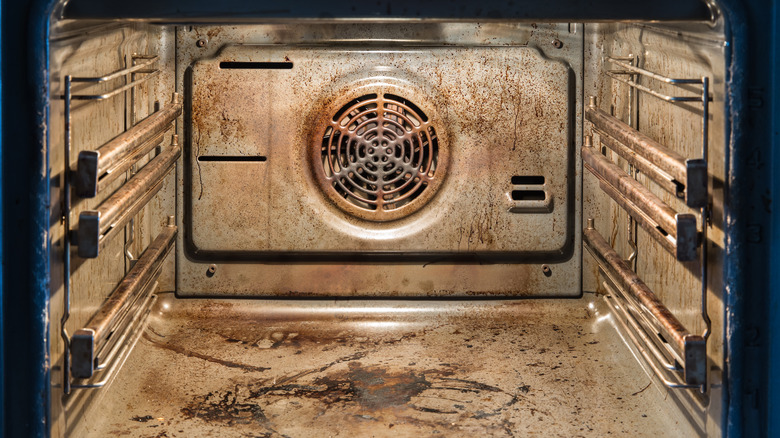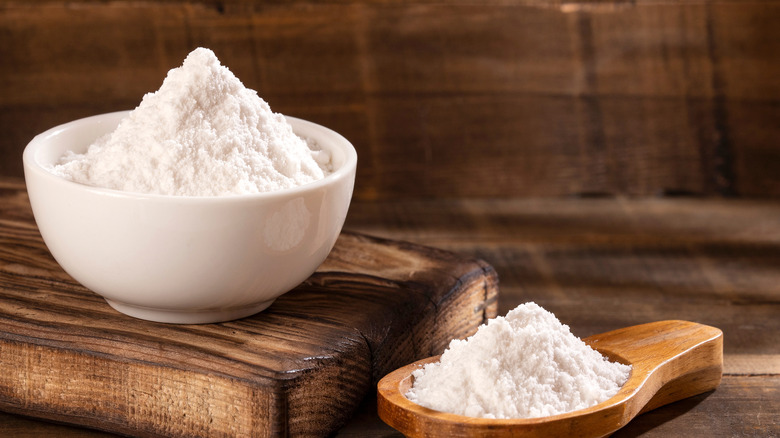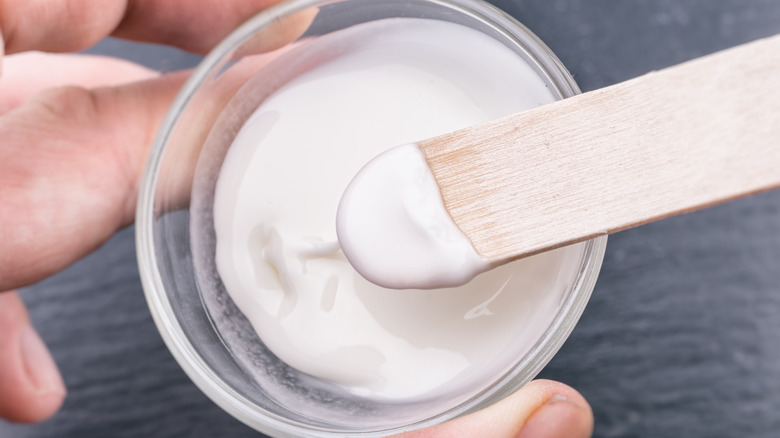You Should Be Cleaning Your Stove With These 2 Pantry Staples
No one we know will say no to having a clean oven, but the opposite can be said of folks who want to use a commercial oven cleaner to do the work, and there's a reason for that. According to Consumer Reports (posted by South Florida Sun Sentinel), a good number of oven cleaners in the market today rely on one chemical to get rid of all the grease buildup: sodium hydroxide, or lye. And while lye can do a stellar job of de-gunking, de-griming, and de-greasing your oven, it is also an acid and comes with plenty of caveats that include wearing protective equipment before using, such as goggles and gloves.
But if you're willing to put in a bit of elbow grease time, there is a way to clean your oven without having to entertain the possibility of hurting yourself, and it involves baking soda and vinegar, kitchen staples that you'd likely already have in the pantry.
A non-hazardous cleaning agent
Architectural Digest suggests you remove all the racks and set them aside, before making a paste using equal amounts of baking soda and water. If the consistency doesn't look particularly paste-like you might want to mess with the proportions a bit more until it does. The publication recommends that you start with a quantity of a half-cup each, but you'll definitely need more of that if you have a bigger oven. Alternatively, Expert Home Tips suggests you use three parts of baking soda to one part of warm water, which will definitely leave you with a thicker paste.
Once the paste is made, smear it all over the insides of your grimy oven — just stay away from its heat sources — and leave the oven like that for at least 12 hours, or overnight. If you, like many of us, are the type to get curious before the 12 hours are up, you may notice that the formerly white paste turns brown after it comes in contact with the gunk, but leave it. You'll thank us later.
Why mixing baking soda and vinegar doesn't work
After the 12-hour period has passed, Architectural Digest recommends using a damp rag to wipe down the insides of the oven. Stubborn areas can be scraped down with a spatula — just be careful to ensure you don't scratch the interior of your oven. To make sure you've removed all the baking soda, spray the vinegar into the oven; any leftover baking soda foams up to become a liquid you just wipe off.
If you're wondering why baking soda and vinegar can't just be mixed up to make that magic oven cleaner we're talking about, Apartment Therapy has the answer, and it has to do with science. Because baking soda is a base, and vinegar is an acid, adding the two of them creates a wonderful, bubbly chemical reaction that ends with a liquid that Amanda Morris, associate chair at Virginia Tech University's chemistry department, calls "glorified water." The only time a baking soda and vinegar mix is of any use is when it's bubbling, but that pretty chemical reaction also weakens the power of the baking soda and water paste. It's the same reason why premixing baking soda and vinegar won't work.


